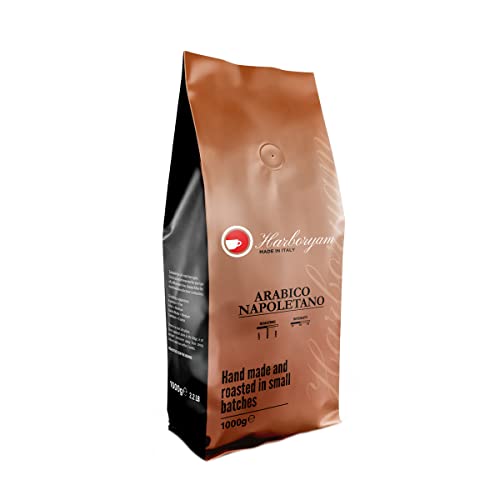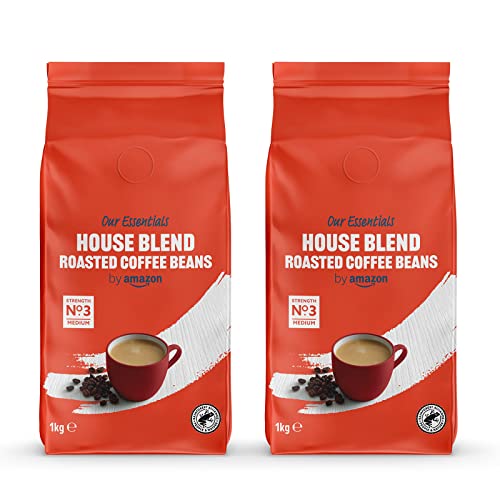The Sage Advice On Best Arabica Coffee Beans In The World From An Olde…
페이지 정보

본문
The best tasting arabica coffee beans Arabica Coffee Beans in the World
Many people are unaware that the coffee beans in your favorite cafe or at the supermarket are not arabica. This type of coffee bean grows best at higher altitudes and has a softer flavor.
Where the coffee beans grow (aka their terroir) can have a significant influence on the taste. This is why single-origin arabicas are highly sought-after.
1. Ethiopian Yirgacheffe
The coffee is known for its citrus and floral scents, this coffee is an old-fashioned. The premium beans are cultivated in small farms in the Oromia Region (formerly Harrar), at altitudes ranging from 1,400 to 2200 meters. The natural process gives pronounced sweetness and berry flavor.
The high elevations of Yirgacheffe causes the coffee plants to grow more slowly, giving them time to absorb the nuances and flavors from the surrounding environment. The region is characterized by an arid climate that is ideal for cultivating coffee.
This coffee is available in green beans that haven't been roasted. They are ideal for roasters who want to reveal the true essence. Light to medium roasts allow the citrus, berry and wine flavors to shine through. This coffee is great with desserts like lemon pound cake and chocolate. The herbal and floral notes go well with spicy or sour dishes.
2. Colombian Supremo
Colombian Supremo, a coffee that is known for its consistency in quality and flavor is a favorite among coffee lovers at all levels. Typically, it has a smooth, classic flavor profile, with notes of light caramel and citrus, Supremo beans have an overall mild flavor that's balanced enough to satisfy a variety of palates.
The size of the beans is an important factor in determining their flavor profile. Supremo coffee beans are large. This larger size implies that the beans are more likely to go through Grade 14 (or higher) perforations on the sieve which is less than the grade of Excelso.
Colombian Supremo is a coffee with universal appeal. Its premium quality standards, bright acidity and moderately rich body make it a great choice for any brewing technique. This particular coffee originates from the Popayan region is cultivated by farmers who belong to the Colombian Coffee Federation, an organization that provides support to over 500,000 coffee growers. This coffee is an excellent example of the premium arabica coffee beans blend Colombian beans which have become famous for their top-of-the-line coffees.
 3. Jamaican Blue Mountain
3. Jamaican Blue Mountain
The smooth, rich flavor of Jamaican Blue Mountain is one of the most sought after gourmet coffees. This wet-processed Jamaican blue Mountain variety is famous for its sophistication and smoothness. It's also an essential ingredient in the coffee liquor Tia Maria.
The Blue Mountains, with their steep elevations, fertile soils, mild climates and dense clouds provide the perfect environment for coffee cultivation of the highest quality. The beans from this small region are highly prized and fetch high prices due to their rareness.
Jamaican Blue Mountain, as its name suggests, is grown in the Blue Mountain District, a area of 6,000 acres on the island known for its natural beauty and coffee production. The area is protected by a national park. farmers cultivate small amounts of coffee with great care to preserve their unique qualities.
4. Costa Rican Tarrazu
A coffee lover's dream, Costa Rican Tarrazu is the perfect balance of body and acidity. The region has high altitudes as well as a mineral-rich volcanic soil, which permits the beans to mature at a slower pace so they can fully develop their flavor.
Many of these farms are recognized for their sustainable practices and strict controls to ensure quality which makes them popular among eco-conscious consumers. Some of them also offer traceability, which enables customers to know more about the specific farm that produced their coffee.
One World Roasters' Tarrazu is a prime illustration of the region's distinctive flavor profile, displaying notes of vibrant grapefruit and rich dark chocolate. Its medium body is well-rounded and balanced, resulting in an elegant finish that is sure to please your palate.
5. Colombian Caturra
Caturra is a cultivar of coffee has become a household name in Latin America. The Caturra cultivar was first introduced in Brazil as a result of an unnatural alteration of Bourbon. Its capacity for production is superior to Bourbon however, it requires higher altitudes resulting in lower yields. The method of mass selection was used to identify plants that produced exceptionally well. Bulk seed from these parents was then produced and the process repeated.
 Colombian Caturra has an excellent yield and is resistant to Coffee Leaf Rust. It is one of the parents of the Castillo variety, which was developed by Cenicafe as the flag plant for their "Colombia sin roya" program designed to revive and revitalize coffee production.
Colombian Caturra has an excellent yield and is resistant to Coffee Leaf Rust. It is one of the parents of the Castillo variety, which was developed by Cenicafe as the flag plant for their "Colombia sin roya" program designed to revive and revitalize coffee production.
This family-owned Caturra was grown by farmers in the department of Urrao at 2,000 meters and carefully roasted for you by Camber Coffee. Its cup is lively with flavors of watermelon citrus and strawberry.
6. French Roast
French Roast is a strong cup of coffee that has smoky, charred notes. This blend combines arabica beans from different regions, delivering rich flavors of chocolate and caramel. The beans are roasted darkly to bring out their natural oils and flavor. This is a high-quality blend that will please even the most sophisticated palate.
These special beans are more difficult to cultivate than other coffee varieties because they require specific conditions in the climatic environment to thrive. The plants require a certain amount sunshine and rain and they need to be protected from frost and drought.
Drinking coffee brewed of these beans can boost your energy levels and improve your health. These beans contain antioxidants that fight free radicals, which can cause chronic diseases such as cancer and heart disease. Additionally they are a source of vitamin B5 or pantothenic acid, which is vital for the body to convert food into energy.
7. Ethiopian Gesha
Geisha or Gesha as it's also known, was first discovered in Ethiopia's Gori Gesha Forest in the 1930s. It was introduced to Panama in the 1960s, and it quickly gained a reputation for its strong floral scents, full body, and delicate citric acidity.
Geisha is a pricey coffee variety. It's susceptible to disease and requires high altitudes for growing. The yield of fruit is also lower. These characteristics make it hard to produce consistently. This, along with its high cup score is what drives the price.
This particular Gesha lot was processed with honey. (Not real honey, but the beans were processed and then dipped into water that contained sugar.) The beans were then placed in a marquee and dried for 96 hours through carbonic maceration. It's a unique method which adds to the richness of this amazing coffee. It also gives OMA an intricate yet balanced cup profile with exotic florals, such as jasmine and tea rose and delicate citrus and stone fruits.
8. Indonesian Liberica
Coffee drinkers are most likely familiar with two species of the Coffea genus: arabica and robusta. The former makes up 80% of all coffee that is traded around the world, while the second only makes up 20 percent. However, there are more than 120 identified species belonging to the genus, and some are more popular than others.
The most well-known non-arabica species is Coffea excelsa (or var. dewevrei). This variety grows on huge trees at medium altitudes and produces a teardrop-shaped beans. It is often blended into blends and can give a distinctive lingering finish to your cup.
Although it's not as well-known as Indigenous Arabica Coffee Beans however, it has a market of its own in Southeast Asia. This is because of the religious demand in the region, as Muslims in Malaysia & Indonesia drink coffee after their prayers. In addition, liberica's resistance to coffee leaf rust and its low caffeine content makes it a viable alternative for producers that do not have the funds to invest in reserve arabica coffee beans.
9. Brazilian Exelsa
While Excelsa is incredibly resilient and productive, it also requires more attention from farmers to manage than other Coffea arabica or canephora species. This is partly due to the asymmetrical size of the bean that is larger than canephora or arabica. It has a longer duration of fruiting and its leaves are bigger than other C. liberica types. It can also grow to 15m tall and produce an abundance of fruits.
According to Oliveiro, it's a shame that the plant has been misunderstood for so long - despite being reclassified as the dewevrei variety of liberica in 2006 - because it could be "a excellent coffee producer". However, without a commodities market and a tiny demand for the species, the switch is unlikely. For those who are willing and able to invest in the time and effort to cultivate it, the advantages of excelsa beans are clear. They are lower in caffeine than arabica or canephora, and also have a more dense and less soluble mucilage.
Many people are unaware that the coffee beans in your favorite cafe or at the supermarket are not arabica. This type of coffee bean grows best at higher altitudes and has a softer flavor.
Where the coffee beans grow (aka their terroir) can have a significant influence on the taste. This is why single-origin arabicas are highly sought-after.
1. Ethiopian Yirgacheffe
The coffee is known for its citrus and floral scents, this coffee is an old-fashioned. The premium beans are cultivated in small farms in the Oromia Region (formerly Harrar), at altitudes ranging from 1,400 to 2200 meters. The natural process gives pronounced sweetness and berry flavor.
The high elevations of Yirgacheffe causes the coffee plants to grow more slowly, giving them time to absorb the nuances and flavors from the surrounding environment. The region is characterized by an arid climate that is ideal for cultivating coffee.
This coffee is available in green beans that haven't been roasted. They are ideal for roasters who want to reveal the true essence. Light to medium roasts allow the citrus, berry and wine flavors to shine through. This coffee is great with desserts like lemon pound cake and chocolate. The herbal and floral notes go well with spicy or sour dishes.
2. Colombian Supremo
Colombian Supremo, a coffee that is known for its consistency in quality and flavor is a favorite among coffee lovers at all levels. Typically, it has a smooth, classic flavor profile, with notes of light caramel and citrus, Supremo beans have an overall mild flavor that's balanced enough to satisfy a variety of palates.
The size of the beans is an important factor in determining their flavor profile. Supremo coffee beans are large. This larger size implies that the beans are more likely to go through Grade 14 (or higher) perforations on the sieve which is less than the grade of Excelso.
Colombian Supremo is a coffee with universal appeal. Its premium quality standards, bright acidity and moderately rich body make it a great choice for any brewing technique. This particular coffee originates from the Popayan region is cultivated by farmers who belong to the Colombian Coffee Federation, an organization that provides support to over 500,000 coffee growers. This coffee is an excellent example of the premium arabica coffee beans blend Colombian beans which have become famous for their top-of-the-line coffees.
 3. Jamaican Blue Mountain
3. Jamaican Blue MountainThe smooth, rich flavor of Jamaican Blue Mountain is one of the most sought after gourmet coffees. This wet-processed Jamaican blue Mountain variety is famous for its sophistication and smoothness. It's also an essential ingredient in the coffee liquor Tia Maria.
The Blue Mountains, with their steep elevations, fertile soils, mild climates and dense clouds provide the perfect environment for coffee cultivation of the highest quality. The beans from this small region are highly prized and fetch high prices due to their rareness.
Jamaican Blue Mountain, as its name suggests, is grown in the Blue Mountain District, a area of 6,000 acres on the island known for its natural beauty and coffee production. The area is protected by a national park. farmers cultivate small amounts of coffee with great care to preserve their unique qualities.
4. Costa Rican Tarrazu
A coffee lover's dream, Costa Rican Tarrazu is the perfect balance of body and acidity. The region has high altitudes as well as a mineral-rich volcanic soil, which permits the beans to mature at a slower pace so they can fully develop their flavor.
Many of these farms are recognized for their sustainable practices and strict controls to ensure quality which makes them popular among eco-conscious consumers. Some of them also offer traceability, which enables customers to know more about the specific farm that produced their coffee.
One World Roasters' Tarrazu is a prime illustration of the region's distinctive flavor profile, displaying notes of vibrant grapefruit and rich dark chocolate. Its medium body is well-rounded and balanced, resulting in an elegant finish that is sure to please your palate.
5. Colombian Caturra
Caturra is a cultivar of coffee has become a household name in Latin America. The Caturra cultivar was first introduced in Brazil as a result of an unnatural alteration of Bourbon. Its capacity for production is superior to Bourbon however, it requires higher altitudes resulting in lower yields. The method of mass selection was used to identify plants that produced exceptionally well. Bulk seed from these parents was then produced and the process repeated.
 Colombian Caturra has an excellent yield and is resistant to Coffee Leaf Rust. It is one of the parents of the Castillo variety, which was developed by Cenicafe as the flag plant for their "Colombia sin roya" program designed to revive and revitalize coffee production.
Colombian Caturra has an excellent yield and is resistant to Coffee Leaf Rust. It is one of the parents of the Castillo variety, which was developed by Cenicafe as the flag plant for their "Colombia sin roya" program designed to revive and revitalize coffee production.This family-owned Caturra was grown by farmers in the department of Urrao at 2,000 meters and carefully roasted for you by Camber Coffee. Its cup is lively with flavors of watermelon citrus and strawberry.
6. French Roast
French Roast is a strong cup of coffee that has smoky, charred notes. This blend combines arabica beans from different regions, delivering rich flavors of chocolate and caramel. The beans are roasted darkly to bring out their natural oils and flavor. This is a high-quality blend that will please even the most sophisticated palate.
These special beans are more difficult to cultivate than other coffee varieties because they require specific conditions in the climatic environment to thrive. The plants require a certain amount sunshine and rain and they need to be protected from frost and drought.
Drinking coffee brewed of these beans can boost your energy levels and improve your health. These beans contain antioxidants that fight free radicals, which can cause chronic diseases such as cancer and heart disease. Additionally they are a source of vitamin B5 or pantothenic acid, which is vital for the body to convert food into energy.
7. Ethiopian Gesha
Geisha or Gesha as it's also known, was first discovered in Ethiopia's Gori Gesha Forest in the 1930s. It was introduced to Panama in the 1960s, and it quickly gained a reputation for its strong floral scents, full body, and delicate citric acidity.
Geisha is a pricey coffee variety. It's susceptible to disease and requires high altitudes for growing. The yield of fruit is also lower. These characteristics make it hard to produce consistently. This, along with its high cup score is what drives the price.
This particular Gesha lot was processed with honey. (Not real honey, but the beans were processed and then dipped into water that contained sugar.) The beans were then placed in a marquee and dried for 96 hours through carbonic maceration. It's a unique method which adds to the richness of this amazing coffee. It also gives OMA an intricate yet balanced cup profile with exotic florals, such as jasmine and tea rose and delicate citrus and stone fruits.
8. Indonesian Liberica
Coffee drinkers are most likely familiar with two species of the Coffea genus: arabica and robusta. The former makes up 80% of all coffee that is traded around the world, while the second only makes up 20 percent. However, there are more than 120 identified species belonging to the genus, and some are more popular than others.
The most well-known non-arabica species is Coffea excelsa (or var. dewevrei). This variety grows on huge trees at medium altitudes and produces a teardrop-shaped beans. It is often blended into blends and can give a distinctive lingering finish to your cup.
Although it's not as well-known as Indigenous Arabica Coffee Beans however, it has a market of its own in Southeast Asia. This is because of the religious demand in the region, as Muslims in Malaysia & Indonesia drink coffee after their prayers. In addition, liberica's resistance to coffee leaf rust and its low caffeine content makes it a viable alternative for producers that do not have the funds to invest in reserve arabica coffee beans.
9. Brazilian Exelsa
While Excelsa is incredibly resilient and productive, it also requires more attention from farmers to manage than other Coffea arabica or canephora species. This is partly due to the asymmetrical size of the bean that is larger than canephora or arabica. It has a longer duration of fruiting and its leaves are bigger than other C. liberica types. It can also grow to 15m tall and produce an abundance of fruits.
According to Oliveiro, it's a shame that the plant has been misunderstood for so long - despite being reclassified as the dewevrei variety of liberica in 2006 - because it could be "a excellent coffee producer". However, without a commodities market and a tiny demand for the species, the switch is unlikely. For those who are willing and able to invest in the time and effort to cultivate it, the advantages of excelsa beans are clear. They are lower in caffeine than arabica or canephora, and also have a more dense and less soluble mucilage.
- 이전글Three Unheard Ways To achieve Better 撥筋教學 24.08.30
- 다음글Seven Tips That can Make You Influential In 台胞證台北 24.08.30
댓글목록
등록된 댓글이 없습니다.




